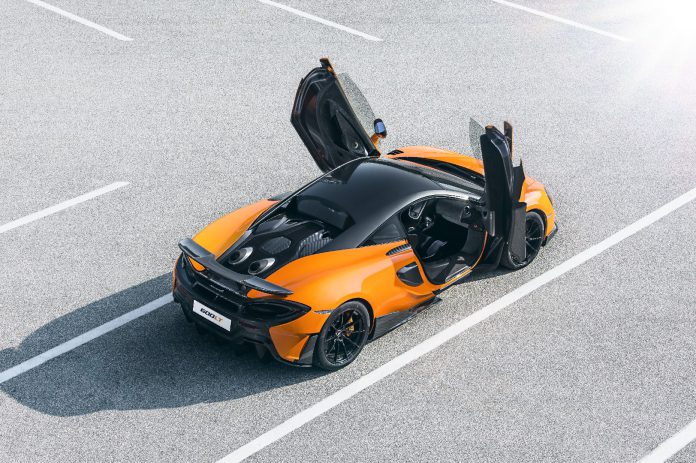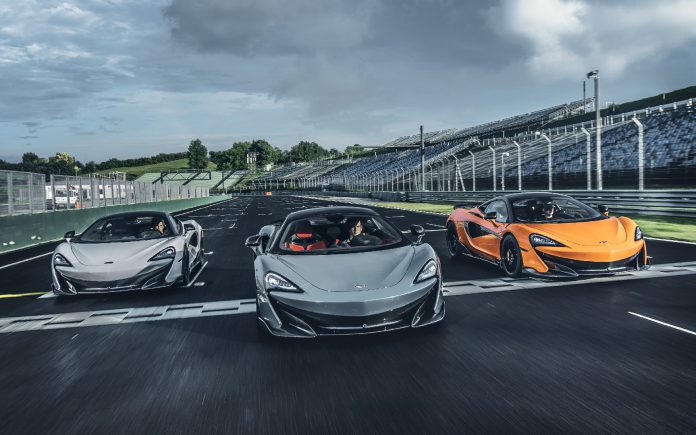McLaren continues its rapid model range expansion with the introduction of the fourth model to carry to ‘Longtail’ name. The McLaren 600 LT follows in the footsteps of the legendary F1 GTR Longtail race car, the 675 LT Coupe and the 675 LT Spider. This obviously sets high expectations for McLaren’s latest performance model, can it live up to it?
The McLaren 600 LT is based on the 570S which was the first McLaren to occupy a position in the Sport Series. The 570S has evolved an entire family since it was launched and now includes a Spider, GT and entry-level 540C. The new McLaren 600 LT is the halo model for the Sport Series. All 570S-based models use the same carbon fibre monocage and 3.8 liter V8 turbocharged engine. The similarities between the 600 LT and the rest of the family stop there. Over 25% of the parts used in the new 600LT, including many key components like brakes, suspension, seats and the 600 LT body, are completely new.
The ultimate goal was to make the 600 LT significantly lighter than the 570S. By using parts developed for the 720S, P1 and the McLaren Senna, engineers have managed to shave 100 kg off of the weight, bringing the total down to 1,247 kg. The weight can be reduced even further by choosing some of the carbon fibre components from the optional extras package.
The Longtail is not just nostalgic name. The 600 LT is actually 74mm longer than the 570S. It has a fixed rear wing and a new, wider, deeper and taller diffuser. The exhaust has been shortened and moved up to just over the driver’s shoulder. The 600 LT sits 8mm lower to the ground, combined with the new front splitter and larger air inlets, these attributes give the 600 LT an agressive visual appearance.
The engine has been tweaked to produce 600 hp and 620 Nm of torque. 0-100 km/h takes just 2.9 seconds, 0-200 km/h, 8.2 seconds and if you keep your foot down the 600 LT will eventually top out at 328 km/h. I wasn’t able to test the top speed of the 600 LT but what I was able to do is to put the McLaren 600 LT through its paces on one of the most technical circuits on the F1 calendar; the Hungaroring just outside Hungary’s capital Budapest.
The first thing you notice when you open the butterfly doors are the new seats. Carried over from the McLaren P1 they are a whopping 21 kilograms lighter than the seats in the 570S. For those that want to save even more weight, the new Senna seats are available as an optional extra and shed an additional 5 kg.
Navigation and climate control are available as no-cost options but they come at the price of adding a few kg back. On a hot and sunny day in Hungary, I’m happy to report that my grey 600 LT had climate control.
Accelerating out of the pits to the first corner, the V8 howls loud. The reduced noise isolation and stiffer engine mounts clearly do their job, improving the audible experience. Yet there is something more striking than the sound of the 600LT coming into the first corner and that is the brakes and their feel. Carried over from the 720S they are a huge improvement over the 570S.
The brakes are not the only thing carried over from the Super Series, the double wishbones along with the lower ride height and 10mm wider front track are key to the improved stability of the 600 LT. It is a real joy driving the McLaren 600 LT at the Hungaroring. Especially through the technical twisty and interlinked back end of the circuit. It suits the LT very well.
The 600 LT bridges the gap with the Super Series and despite a small power deficit, it is better and at least as fast around the track as the 675 LT. It is a reminder of the speed at which McLaren develops and introduces new and improved components. It feels lightyears ahead of McLaren’s original MP4-12C. That car was released less than a normal 7-year car-cycle ago. The quick model succession has not always been without criticism but the owners of the 600 LT reap the benefits from the steep learning curve and rapid development at McLaren through the last 7 years.
Talking about lifecycle – production of the McLaren 600 LT starts this October and will run for exactly one year. Production is limited, although it is not clearly defined exactly how many will be build. This has to do with overall production plans for 2019, but it is certain that McLaren dealers around the globe already have a bigger waiting list than what the factory will be able to fulfill. Luckily McLaren have already confirmed that a 600 LT Spider will follow the Coupe next year.


